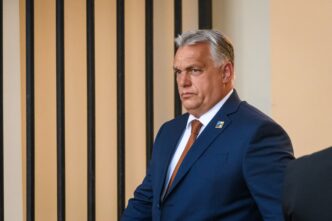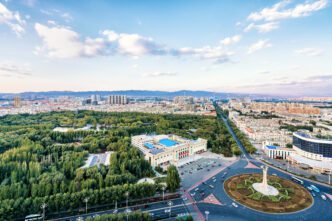ROME – The Italian government gave its final approval on Wednesday to a monumental and deeply controversial €13.5 billion ($15.8 billion) project to build the world’s longest suspension bridge, a long-dreamed-of link connecting the island of Sicily to the mainland.
The decision marks a major political victory for the administration of Prime Minister Giorgia Meloni and, in particular, for Transport Minister Matteo Salvini, who has championed the project as a hallmark of his tenure. Proponents hail the bridge as a “revolution” that will bring jobs, economic growth, and development to Italy’s historically underserved south. However, the project is beset by profound concerns from environmental groups, academics, and anti-mafia watchdogs, who have raised alarms about seismic risks, environmental damage, and the potential for infiltration by organized crime.
An inter-ministerial committee with oversight of strategic public investments approved the massive project, the Transport Ministry said in a statement. Preliminary work could begin as soon as this summer, with construction slated to start next year. Despite the potential for bureaucratic delays, Salvini has stated the bridge is expected to be finished by 2033.
“It is not easy work, but it is an investment in Italy’s present and future, a difficult but sensible challenge,” Prime Minister Meloni said, calling the bridge “a strategic infrastructure for the development of Southern Italy and the entire country.”
The idea of a permanent link across the Strait of Messina dates back to ancient Rome and has been approved and canceled multiple times since the government first solicited proposals in 1969. Its latest revival has been a central focus for Salvini and his party.
The Strait of Messina Bridge, as designed, would be an engineering marvel. It would measure nearly 3.7 kilometers (2.3 miles) in total, with its main suspended span reaching 3.3 kilometers (2.05 miles), surpassing the current record-holder, Turkey’s Çanakkale Bridge. With four lanes of traffic flanked by a double-track railway, the bridge would have the capacity to carry 6,000 cars an hour and 200 trains a day.
The project, however, is mired in controversy. The government has indicated it would classify the bridge as defense-related, a move that would help Italy meet its NATO commitment to raise defense spending to 5% of its GDP. The argument is that the bridge would form a strategic corridor for the rapid deployment of troops and equipment to NATO’s southern flank.
This military classification has been met with fierce opposition. A group of more than 600 professors and researchers signed a letter this summer opposing the designation, noting that it would require additional assessments to ensure the structure could withstand military use. Opponents also warn that the designation would potentially make the bridge a strategic target in a conflict.
Environmental groups have lodged additional complaints with the European Union, citing concerns that the massive structure will have a devastating impact on the migratory bird routes that cross the strait. They also argue that environmental studies have not demonstrated that the project is a public imperative that would offset the certain environmental damage.
Furthermore, the specter of the mafia looms large over any major infrastructure project in southern Italy. Concerns that organized crime syndicates could infiltrate the lucrative construction contracts were so significant that Italian President Sergio Mattarella insisted that the project remain subject to the standard, stringent anti-mafia legislation that applies to all large-scale projects, rejecting an initial ad-hoc arrangement that critics feared would weaken controls.
The project has been awarded to a consortium led by WeBuild, a major Italian infrastructure group, which had initially won the bid to build the bridge in 2006 before it was canceled in 2013. The company has sought to allay fears about building the massive structure over the Messina fault, which triggered a catastrophic earthquake in 1908.
Addressing the seismic concerns, WeBuild emphasized that suspension bridges are structurally less vulnerable to earthquakes than other designs and noted that such bridges have been successfully built in other highly active seismic zones, including Japan, Turkey, and California. The company noted that the engineering model originally devised for the Messina Bridge, featuring a deck shaped like a fighter jet fuselage to allow wind to pass through, was successfully used to construct the Çanakkale Bridge, which opened in 2022.








